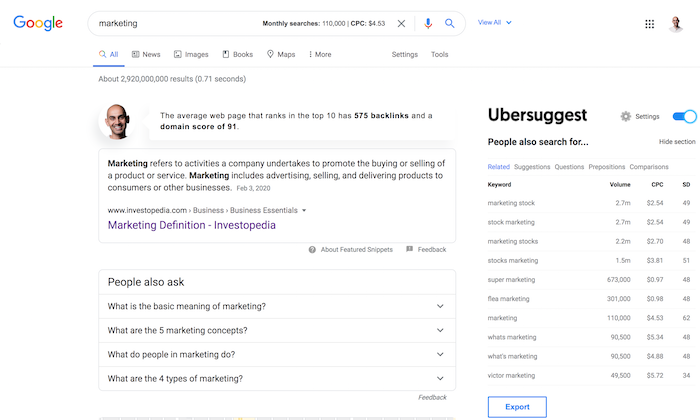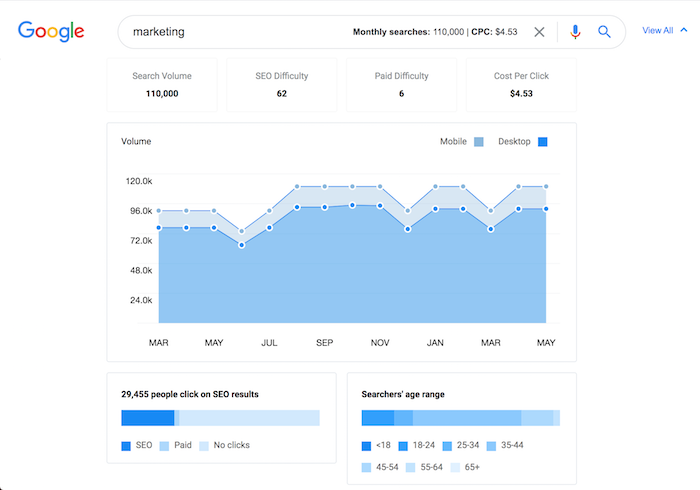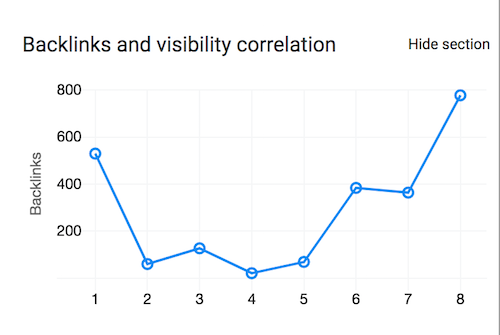If you’re looking to get even more out of your Instagram presence, the Instagram swipe up feature is a great addition to your Instagram marketing strategy.
The Instagram Story swipe up allows you to be more tactical with your Stories, leading to even more clicks and conversions.
Let’s talk a bit more about what this feature is and how it works, before diving into how to utilize it.
What is the Instagram swipe up feature?
Marketers know all too well that Instagram doesn’t offer much in the way of adding links to posts. And changing the link in to your bio can be tedious, especially if you’re publishing multiple times a day and wanting to link to different landing pages. But accounts that meet the criteria to add swipe up links to their Instagram Stories have the option to be more versatile.
Instagram swipe up is incredibly useful because it allows businesses to promote products, blog posts and sign up pages. These pages open right in the app for users to explore as well.
When a swipe up link is added to a Story, viewers can simply tap on the arrow at the bottom of their screen or swipe up on the Story to access the link.
Here’s what this looks like on a Sprout Social Instagram Story below.

How to get the Instagram swipe up feature
Remember how I said only accounts that meet certain criteria are able to access the Instagram Story link feature?
Because Instagram wants to keep it exclusive for the time being, they’ve set restrictions on accounts that can access this feature and add it to their Stories.
In order to get the Instagram swipe up feature, your account:
- Must be an Instagram Business Profile and
- Must have over 10,000 followers
OR
- Must be a verified account
This means that celebs, public figures and brands that are verified and haven’t crossed that 10,000 follower threshold are still able to access the coveted Instagram swipe up feature.
How to add a link to your Instagram Story
Once you’ve reached the criteria that give you access to the Instagram swipe up feature, the link icon will automatically appear at the top of your stories editor (fourth from right).

Once you tap it, the window that allows you to add a link to your Story pops up. Add any link to your website, whether it’s a blog post, a landing page or a piece of curated content you’re sharing with your audience.
This is also where you input information about brand partnerships if you’re sharing sponsored content. Tagging your business partner adds a “paid partnership with” label to your story, but it can also limit your ability to edit the Story.

Click the + Web Link section, add your URL then tap Done. You can easily clear or edit your link by tapping the link icon again, or move forward and share your Story with your followers.
Get the most use from the Instagram Story link
So you know what it is, how you get access to it and how to add the Instagram swipe up feature to your Stories.
Now let’s talk about various ways you can take advantage of this new feature to link to websites from your Instagram account.
Promote blog posts
Want to promote your recent blog post? Creating a graphic and sharing it on your Instagram Story is a great way to get even more social traction to your content! Just be sure you’re on top of Instagram’s Story dimensions when you create your visuals. Remember that not all mobile devices have the same dimensions, so it’s important to create graphics within the right dimensions.
When you create your graphics, be sure to include relevant visuals to your blog content and keep your imagery on brand.
Using similar fonts and colors to your overall brand helps with brand strength and recognition, especially when users are scrolling aimlessly through Instagram Stories.
Take a look at this example of a blogger sharing a link to a recent post.

Notice how the graphic and text are concise and clear; the blog name is above the image, and below is the title of her blog post and even the CTA “Swipe Up,” which appears above Instagram’s native “See More” to signify a link.
You can keep track of your Story swipe ups in your Instagram insights.
Promote products
Another great way to use the Instagram swipe up feature is by promoting your products. After all, Instagram is a visual platform, so use it to share stunning, professional photos of your products with a direct link to their product page.
Take a look at how clothing boutique DressUp promoted their summer tops on their Instagram Story.

Using one of Instagram’s built-in features, the brand created a collage of their products in their Story and used the swipe up to link to a product category page. They’ve made it easy for viewers to instantly shop after seeing something they like.
You can take this one step further with Instagram shopping and link your products to your Instagram account so users can view a story and make a purchase without ever leaving the app.
Promote virtual events
If you’re putting on a virtual event and you’re trying to generate a larger turnout for it, use the swipe up feature to attract registrants. You probably already have promotional graphics for it, so share your graphics to your Stories and include a link to the registration landing page.
Take a look at this webinar promotional graphic from Zapier. They shared an Instagram post from their feed onto their Story and added a direct swipe up link, making it easier for their followers to sign up for their upcoming webinar.

You can easily share your Instagram posts to your own story by tapping the share icon and selecting your Story. This can be a great way both to add links to Instagram posts and get people who are viewing your Story to click to your feed.
Promote landing pages
Whether you’re linking to a sales or service page or an informational landing page, it’s incredibly important to get it in front of your potential customers’ eyes.
These types of webpages are transactional pages, meaning their purpose is to reel visitors in and get them to sign up or make a purchase.
Take a look at this Instagram story promoting and linking to an online course sales and landing page.
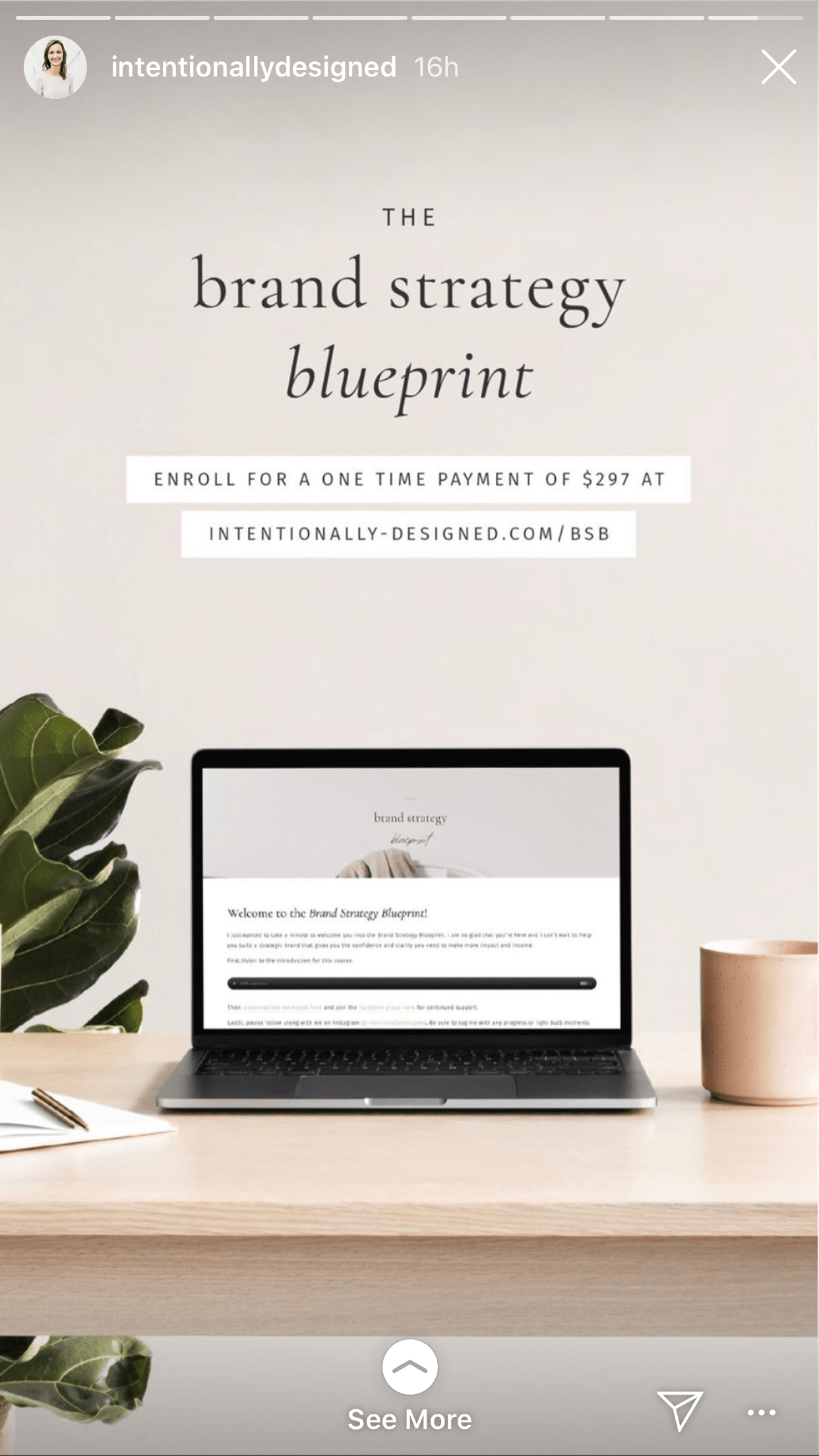
Creating Instagram Story graphics (or videos about a service, or even sharing videos of other users as social proof) to link to landing pages should be a big part of your Instagram Stories strategy.
Promote videos
Whether you recently posted a new video to IGTV, YouTube, Facebook or directly to your website, you can easily increase views by sharing a link on your Instagram Story.
Here’s an example of a user sharing a thumbnail of her recent YouTube video on her Instagram Story. The Story links directly to the video so her Instagram followers can immediately watch it.
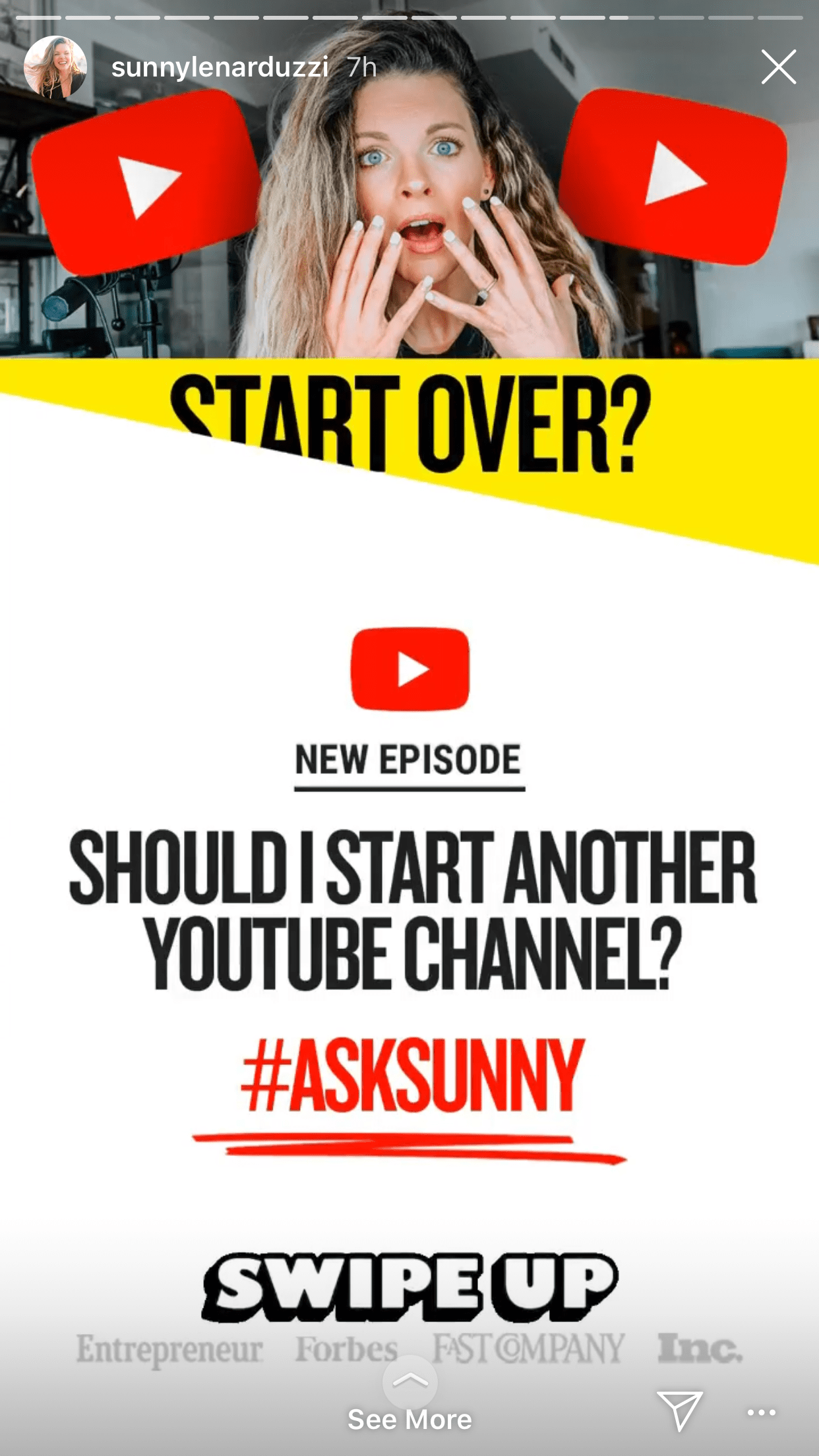
Once you unlock the Instagram swipe up feature, you can bring your cross-platform promotional content and strategies to your Stories.
Simply create a graphic in Instagram story dimensions, upload it, add a link and publish. Voila! And now you’re able to send followers from Instagram to a video, another social network or your website.
Promote lead magnets
Trying to grow your email list? Promoting lead magnets and email list signups is another great use of the Instagram Story link.
Or, invest in Instagram Story ads, like this example below, that will add an easy-to-use signup form directly on swipe, rather than a signup page that users have to navigate through.
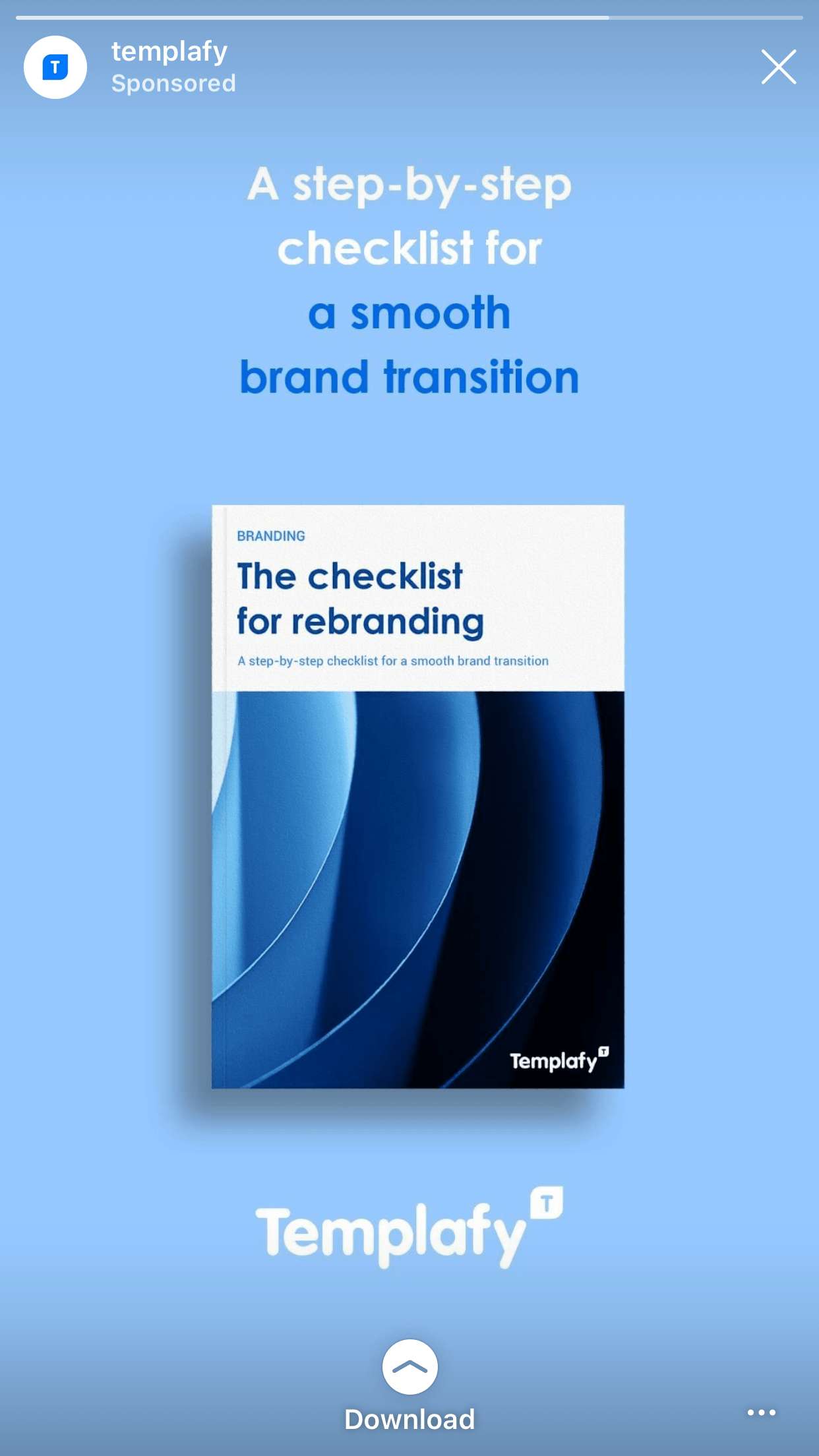
How to increase swipes
Now that you’re getting ready to take full advantage of the Instagram Story swipe up feature, it’s important to note a few tips that can help you to increase Story clicks to your website and other promotions.
Include a call to action
First, you should include a call to action right in your Story. Whether it’s a video or graphic, you need to call attention to the swipe up link at the bottom of your Story.
Add GIFs/arrows
Instagram Stories have a ton of stickers to choose from, like arrows, GIFs and other visuals that can help draw attention to your swipe up link.
You can add an animated arrow pointing to the link, or you can even find stickers that flash “SWIPE UP” at your viewer so they know there’s more they can access.

Post often
As with any platform, the more consistently you post, the more reach and engagement you’re going to receive. If users watch your Stories often, your brand will appear towards the beginning of their Stories feed.
But if you take a long hiatus from posting Stories, you could lose your place in their feed, losing dedicated viewers and potentially loyal customers.
Once you start working on an Instagram Stories strategy, try to keep up with it so you don’t lose that hard work and viewership.
Start increasing clicks and conversions with the Instagram swipe up feature
Ready to start converting your Instagram followers? Learn even more about the benefits of using an Instagram Business Profile, and how its features can help you grow and promote your business.
This post How to use the Instagram swipe up feature in your Stories originally appeared on Sprout Social.
from Sprout Social https://ift.tt/3gDcx9l
via IFTTT
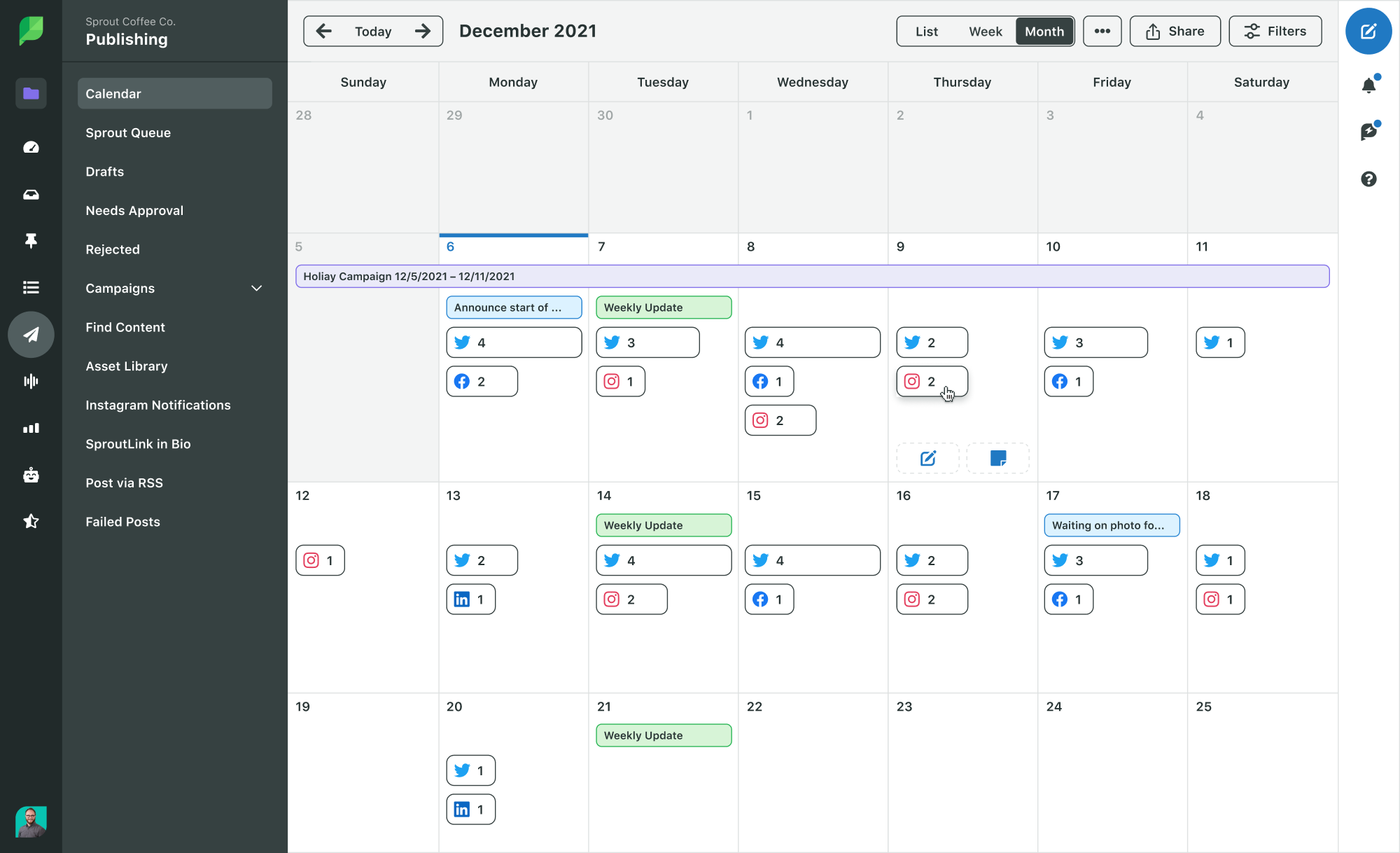

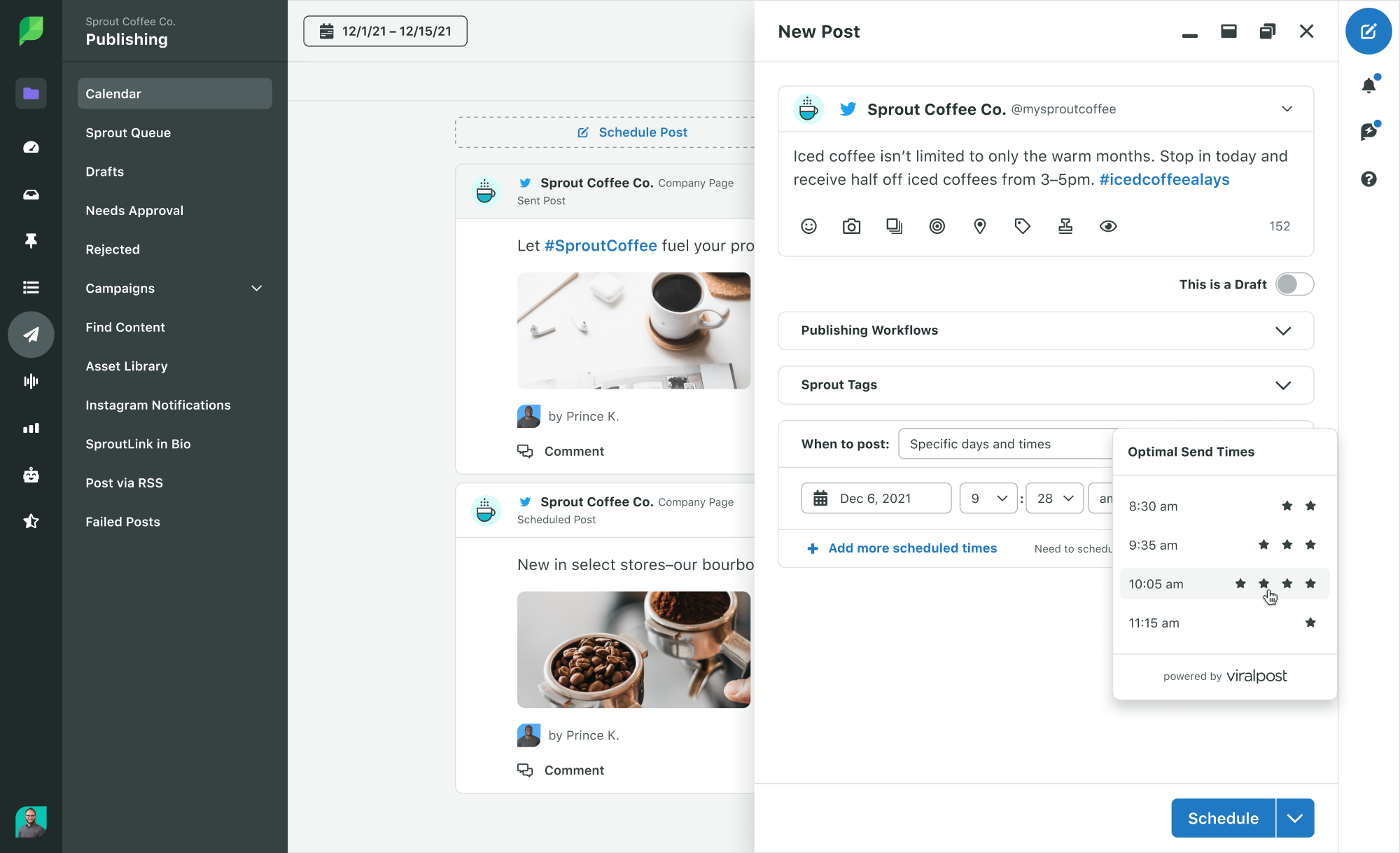
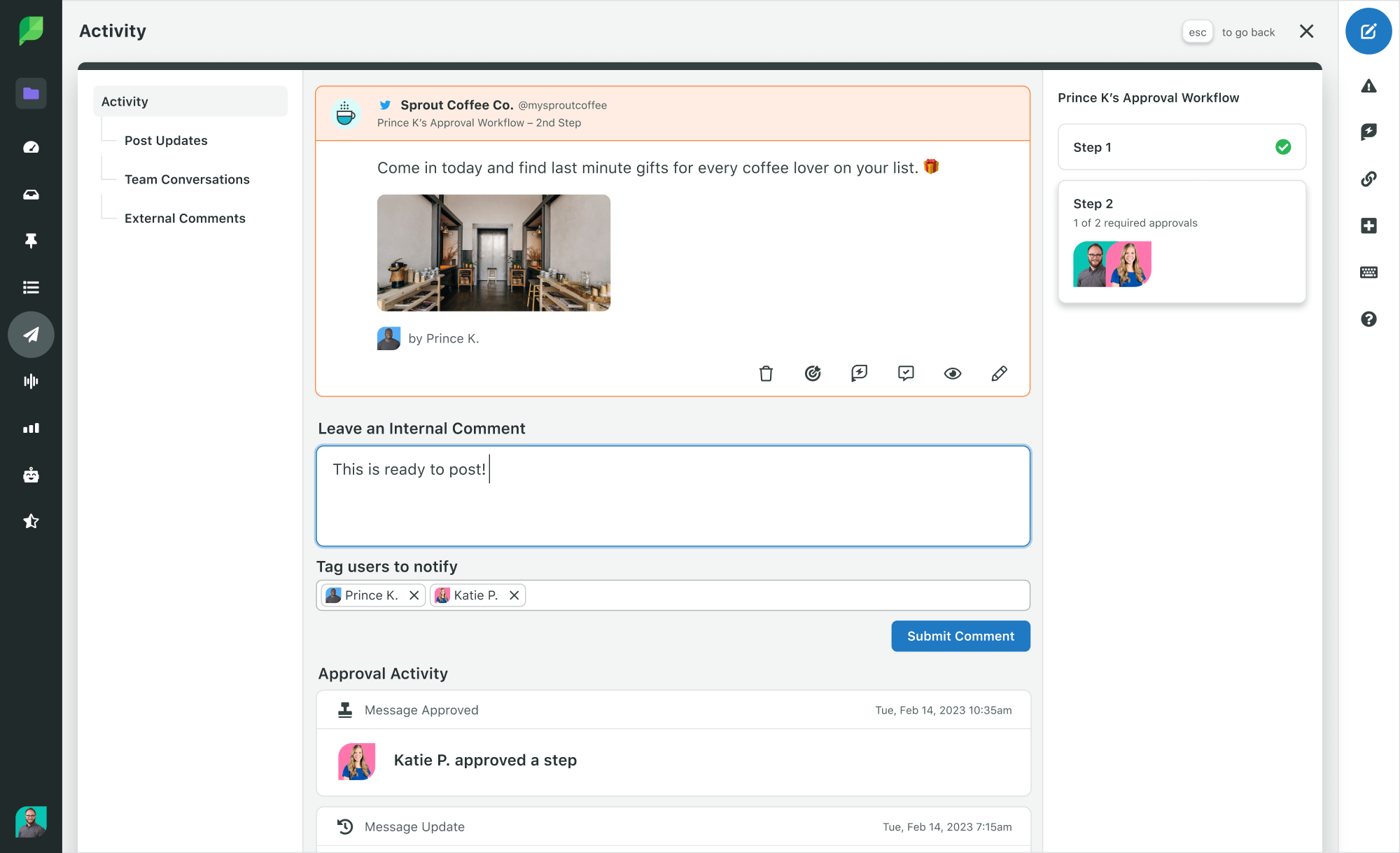

 In Sprout, users can view conversation history between your team and contacts. With that context, you can personalize responses and nurture a lasting customer relationship. In the same window, you can add contacts to VIP Lists, which is useful when identifying brand evangelists and potential ambassadors or influencers for your next campaign.
In Sprout, users can view conversation history between your team and contacts. With that context, you can personalize responses and nurture a lasting customer relationship. In the same window, you can add contacts to VIP Lists, which is useful when identifying brand evangelists and potential ambassadors or influencers for your next campaign.







